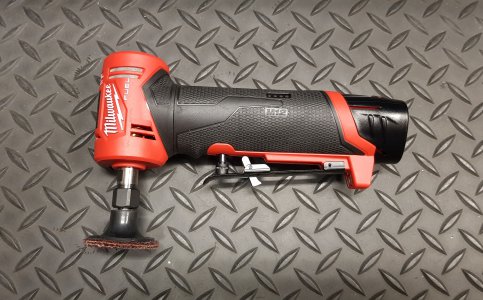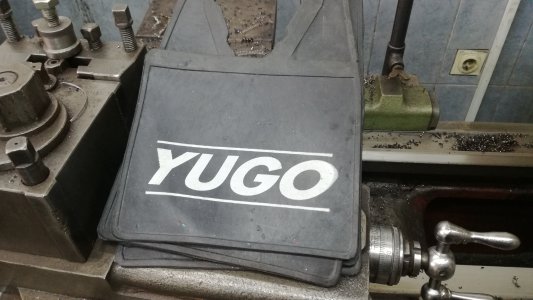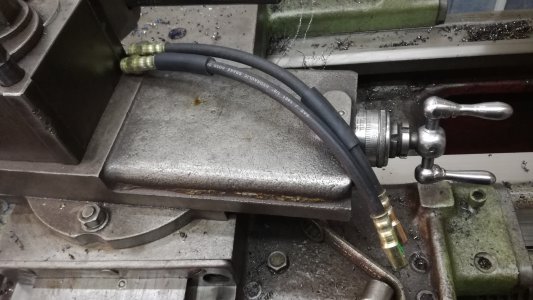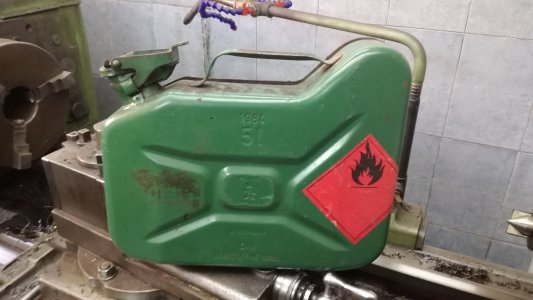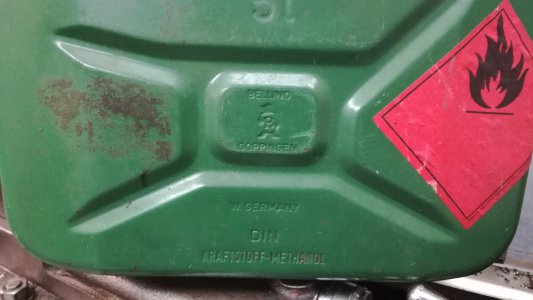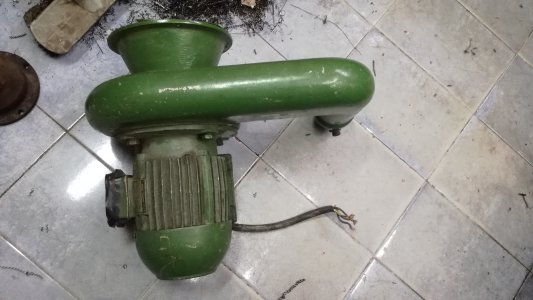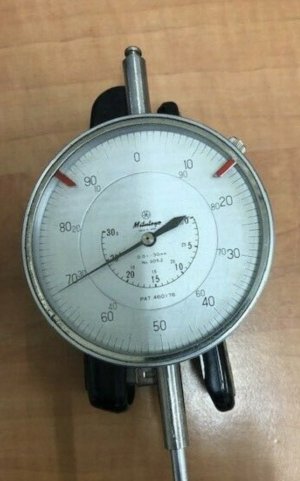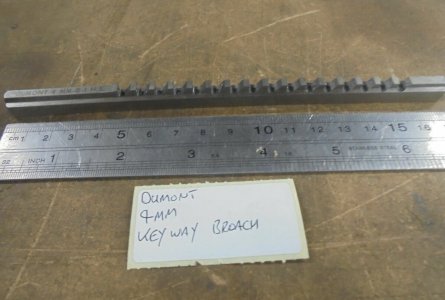Couple of new to me "essentials". Don't know where I'll ever use it, picked up a 20" gauge block for $10. I guess I could use it to check the accuracy of my Bridgeport's DRO or make a really wide mill tramming fixture.
20" gauge block
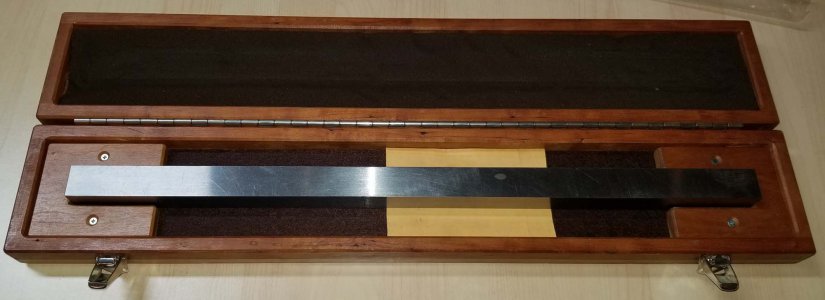
Other addition was a collet chuck tension/compression tapping head for my Tormach 1100. List is $450 from Tormach, got this for a Buy It Now price of $150 off eBay. I have a couple of ER20 tension/compression heads already, but I think this one will be my go to. I'm still a newbie on the CNC stuff, but think I have a handle on the advantages/use, PLEASE correct me if I'm wrong.
Tormach tension/compression collet chuck with collets for taps #0 - 1/2"
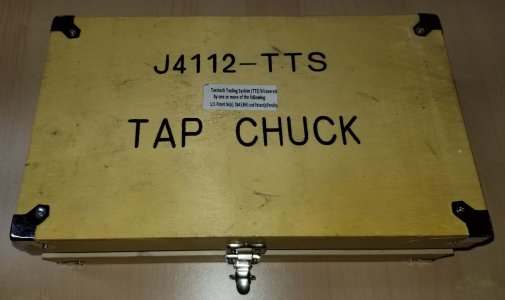
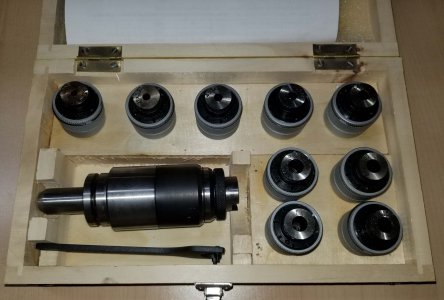
1/4" - 20 tap loaded in a collet
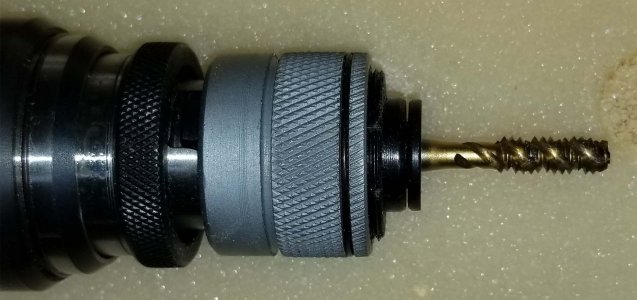
The Tormach 1100 Series 3 does not have rigid tapping. I think that's running the tap from the spindle where speed and feed are accurately controlled. I suspect that the Z-feed is varied to match the spindle position so the machine feeds the tap at exactly the rate that the spindle is turning. A 1/4"-20 tap would feed 1/20th of an inch for each revolution and no doubt increments the feeds at very small intervals.
My Tormach uses a VFD to drive the spindle motor, but there's no built in tach or spindle position sensor to ensure the spindle is moving or is at the speed indicated. The tension/compression head has a spring take-up as it drives the tap to take up variation in the spindle speed. Z-axis feed rate is "RPM / tpi" or for a 1/4" - 20 at 500 RPM, 500/20 or feed of 25 ipm. Problem is, the spindle speed could be 410 or 390 or even off more, so a rigid attachment from the spindle to the tap would put the tap in compression or tension and maybe snap the tap.
I'm thinking it'd be best to error on the side of a little too high of Z-axis feed rate as the tapping head has about 3/4" of travel in compression. That way the tap would feed a bit quicker than the spindle expects and ends up compressing the spring in the head as it taps. Or, perhaps I could advance the Z-axis so the tap is jammed into the tap hole to pre-compress the spring, then turn the spindle on which gives spindle speed wiggle room if it's off either high or low. Probably start with the former method as letting the CNC Z-axis jam a tap with a stationary spindle into a hole just goes against my grain.
Anyway, the nice thing about this head is the collets pop off very quickly. I'll load the collets with standard taps and use the electronic tool setter to determine each tool length. Each tap will have a unique tool number so when running a routine, the same head can tap multiple sized holes (tapping head range is #0 - 1/2" taps) by just swapping the collet on the end. With the ER-collet style heads, I load a tap and take a tool length that has to be redone every time I change taps. I have two of those heads, so can quickly swap between two sizes, but this head gives me more options. I guess a work-around there would be to mark the tap shank at the collet and try to insert it to the same position every time; yeah, the new head will be my go to.
Thanks for looking, Bruce









